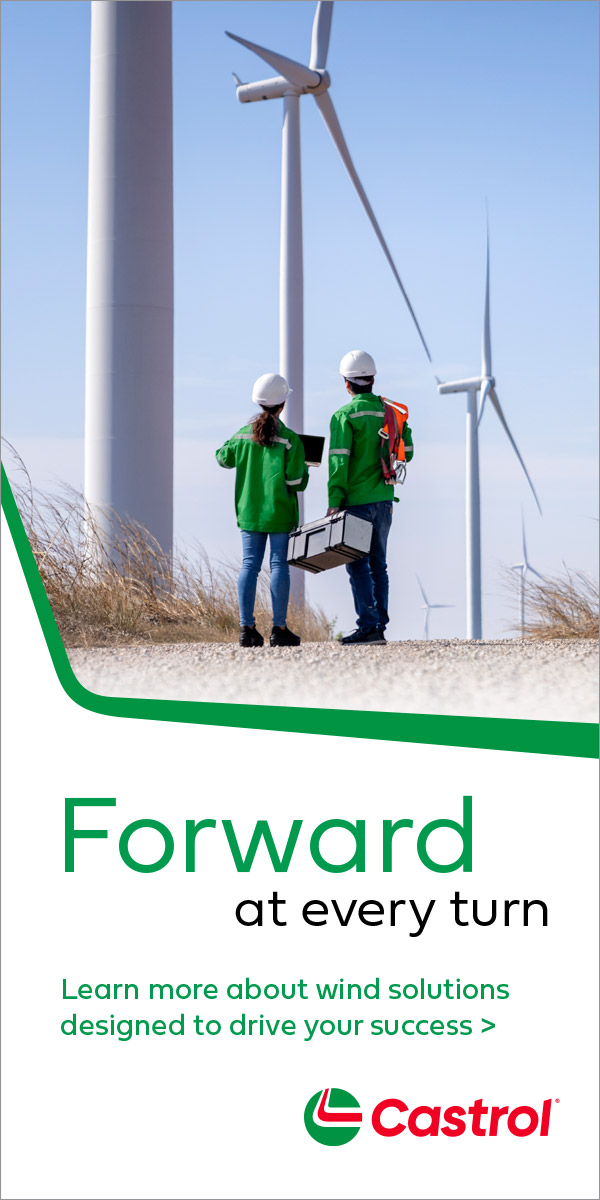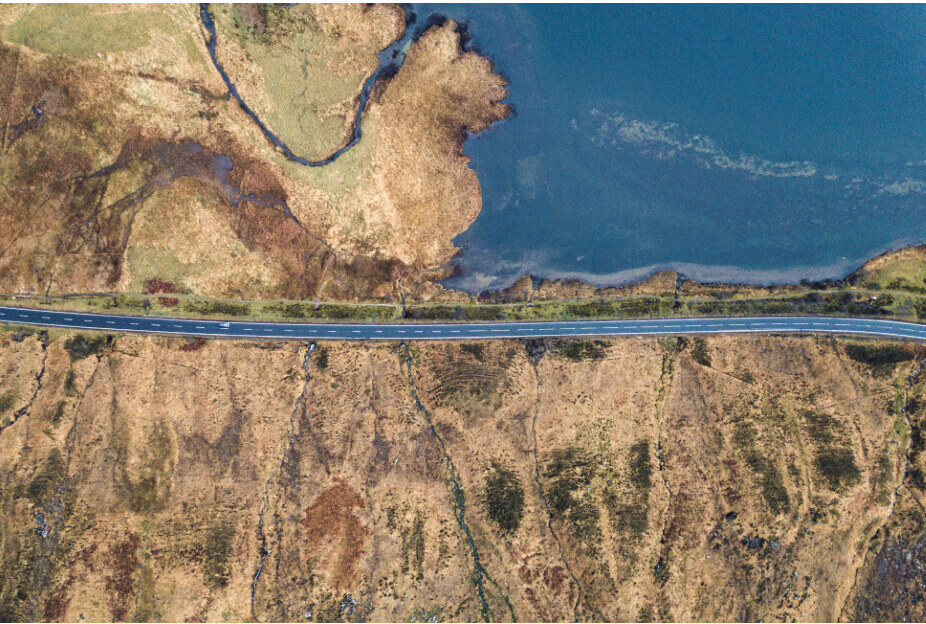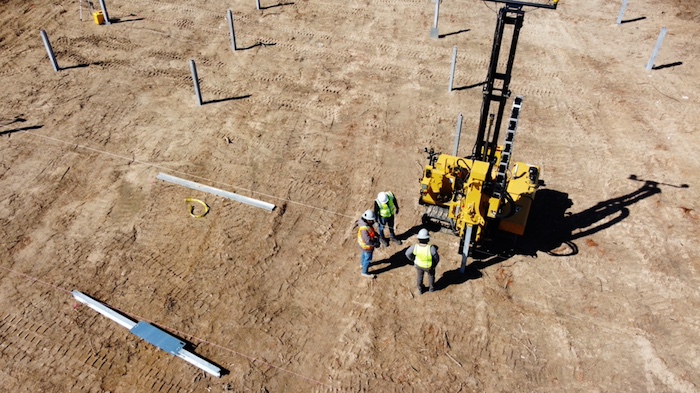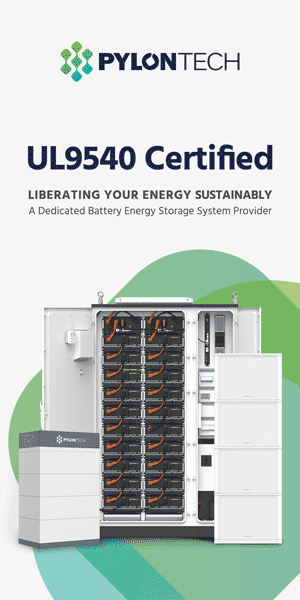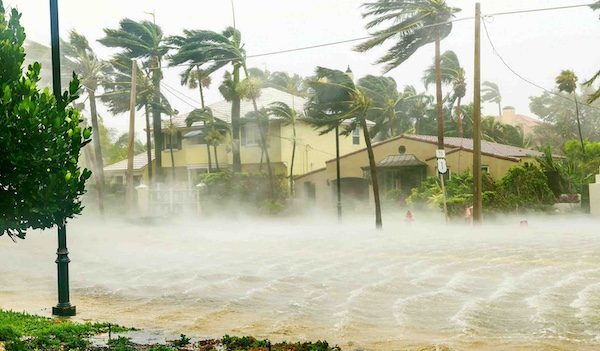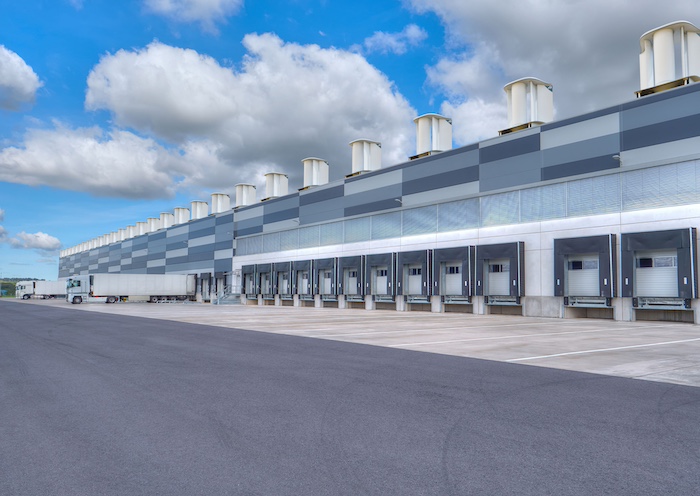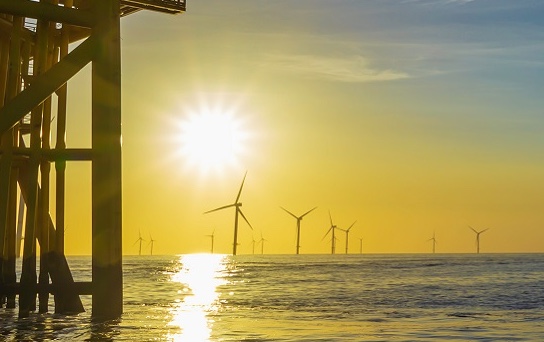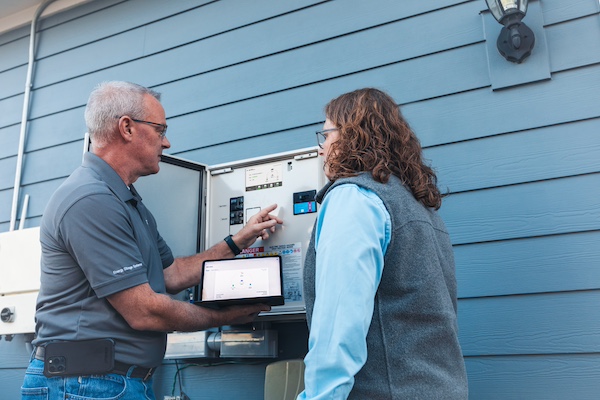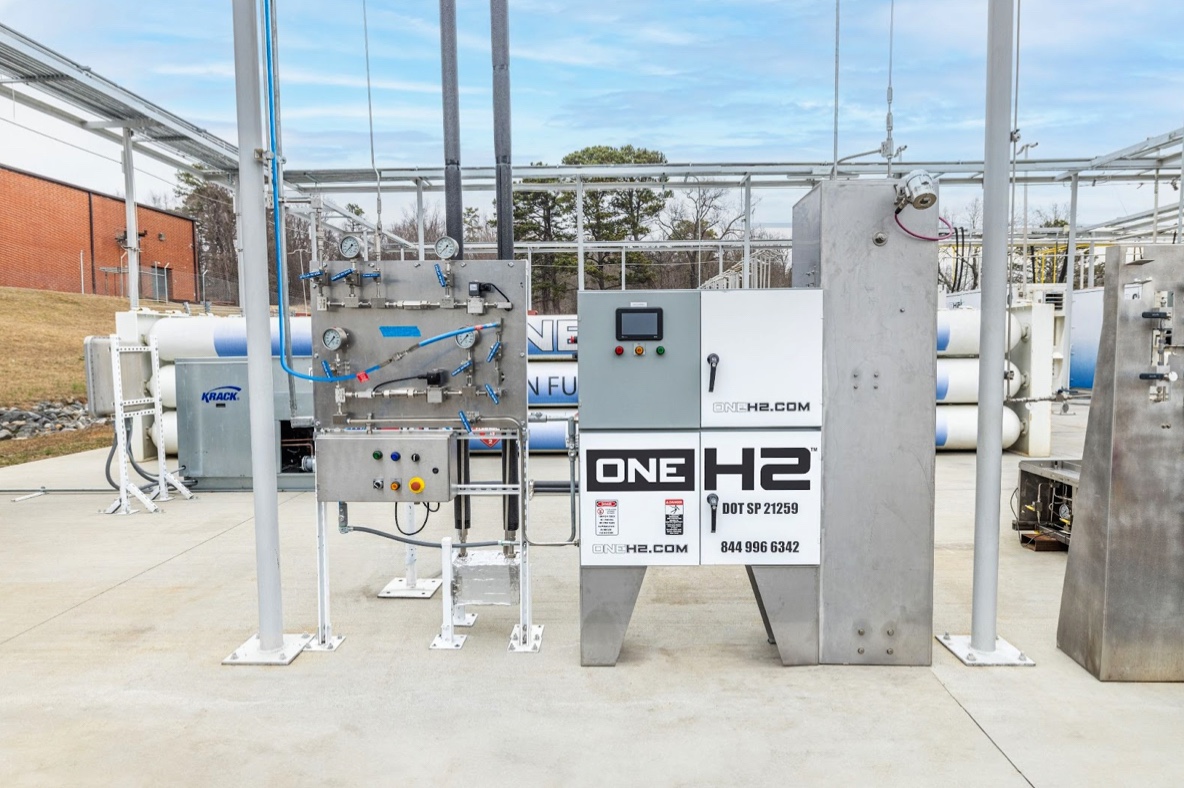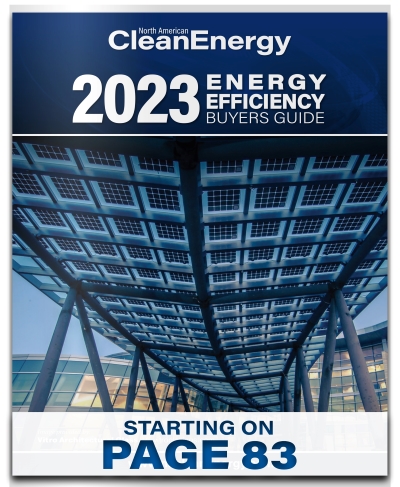Greenbacker Renewable Energy Company LLC (“Greenbacker,” “GREC,” or the “Company”), an independent power producer and a leading climate-focused investment manager, has announced financial results[i] for the first quarter of 2024, including year-over-yearincreases in revenue, operating capacity,[ii] and clean energy generation.
Greenbacker converted 209 MW of pre-operational assets into revenue-generating, operational assets, a year-over-year increase of 15%
A key focus of Greenbacker’s recent new investment activity has been converting the pre-operational assets under the Company’s control to operational, revenue-generating assets, as well as the repowering of three operational wind projects.
The Company’s independent power producer (“IPP”) business segment placed into service 209 megawatts (“MW”) of clean energy-generating capacity, growing its operating fleet by 15% on a year-over-year basis. This expansion included bringing online the 99 MWdc / 80 MWac Fall River solar project—one of GREC’s largest assets to date.
As of March 31, 2024, GREC’s operating fleet had increased to 1,574 MW—nearly 1.6 gigawatts (“GW”)—of projects generating revenue through the sale of electricity.
$437 million financing for wind repower portfolio includes Greenbacker’s major first sale-leaseback financing and represents one of industry’s first deals to leverage domestic content adder
During the first quarter of 2024, Greenbacker completed construction and financing on the third and final wind asset in its first portfolio of repowers (after completing financing on the previous two repowers in late 2023), bringing total financing for the milestone portfolio to $437.2 million.
The portfolio represents a number of financing milestones for Greenbacker. The projects are among the clean energy industry’s first to utilize the 10% domestic content bonus newly created by the Inflation Reduction Act (“IRA”),[iii] in addition to qualifying for the 30% investment tax credit.
The repowers are also Greenbacker’s first sizable projects financed via sale-leaseback. This financing structure provided the Company with greater upfront proceeds and efficiently captured the benefits of both tax equity financing and back leverage lending in a single transaction.
By monetizing the portfolio’s 40% tax credit through the sale-leaseback financing, Greenbacker was able to realize the IRA’s benefits more quickly, both fully financing the repowers and utilizing additional proceeds for other corporate activity, such as converting the Company’s pre-operational pipeline into operational revenue-generating assets.
Greenbacker repowers 38 MW wind asset
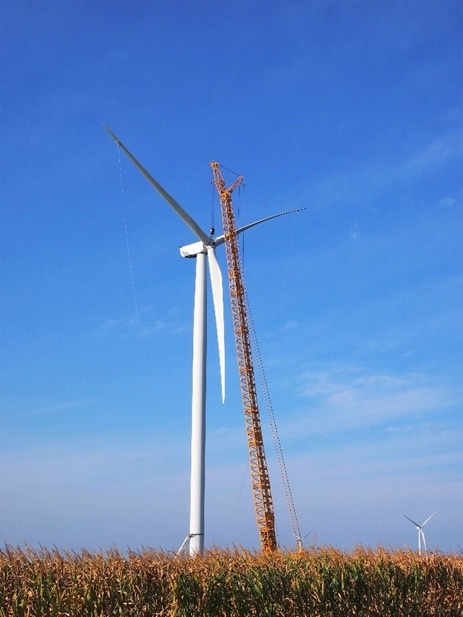
Greenbacker replaced older turbines at its wind farm in Iowa with new, more efficient components sourced domestically, supporting well-paying jobs in the US and improving the project’s power-generating ability.
Company’s first-quarter total operating revenue topped $49 million, a year-over-year increase of 19%, driven by growth in both solar and wind power generation
GREC’s fleet of clean energy projects produced over 644,000 megawatt-hours (“MWh”) of total power, representing a year-over-year increase of 12%.
The production increase was largely driven by a 21% increase from Greenbacker’s operating solar fleet, which generated approximately 308,000 MWh of clean power. Greenbacker’s wind fleet experienced a 6% year-over-year uptick in power generation, producing more than 325,000 MWh of energy.
The Company’s wind energy production increase was realized despite the third and final asset in the repower portfolio being offline for a portion of the first quarter of 2024 while its repowering was being concluded. With all work now completed, the repowered assets are projected to significantly increase Greenbacker’s annual operating revenue in the long term, starting by contributing over $24 million of revenue in 2024.[iv]
|
GREC Operating Fleet*
|
First Quarter 2024
|
First Quarter 2023
|
YoY Increase (total)
|
YoY increase (%)
|
|
Clean power produced by solar assets (MWh)
|
307,829
|
255,225
|
52,604
|
21%
|
|
PPA revenue generated by solar assets (millions)
|
$15.3
|
$12.8
|
$2.5
|
20%
|
|
Clean power produced by wind assets (MWh)
|
325,406
|
305,628
|
19,778
|
6%
|
|
PPA revenue generated by wind assets (millions)
|
$17.7
|
$16.2
|
$1.5
|
9%
|
|
Total clean power generated by wind and solar assets (MWh)
|
633,235
|
560,853
|
72,382
|
13%
|
|
Total PPA operating revenue generated by wind and solar assets (millions)
|
$33.0
|
$29.0
|
$4.0
|
14%
|
*Some figures may not add to stated totals, due to rounding.
Over the quarter, Greenbacker generated total operating revenue of $49.2 million, a year-over-year increase of 19% that amounted to an additional $7.9 million of operating revenue.
This increase was primarily driven by energy revenue within the IPP segment, which totaled $44.6 million and included $34.3 million from the Company’s long-term PPAs. Funds From Operations (“FFO”) was $(2.4) million for the period and represents the $9.2 million of Adjusted EBITDA less cash interest expense and distributions to our tax equity investors. The net loss attributable to Greenbacker was $8.5 million for the quarter, driven by items such as depreciation, amortization, and impairment charges recorded during the period.
|
For the three months ended March 31, 2024
|
In millions (unaudited)
|
|
Select Financial Information
|
|
|
Total Revenue
|
$ 46.6
|
|
Total operating revenue*
|
$ 49.2
|
|
Net loss attributable to Greenbacker
|
$ (8.5)
|
| |
|
|
Adjusted EBITDA†
|
$ 9.2
|
|
FFO†
|
$ (2.4)
|
NOTE: See the Company’s quarterly 10-Q filed with the SEC for additional financial information and important related disclosures.
*Total operating revenue excludes non-cash contract amortization, net.
†See “Non-GAAP Financial Measures” for additional discussion. Adjusted EBITDA and FFO are unaudited.
Leadership team expanded as Company appointed new Chief Financial Officer and added newly created position Head of Capital Markets
In early 2024, Greenbacker announced the expansion of its leadership team. Christopher Smith, CFA joined the Company as Chief Financial Officer, bringing over 20 years of accounting and finance experience within the energy sector.
The Company also welcomed Carl Weatherley-White as Head of Capital Markets, following the late-2023 addition of Daniel De Boer as Head of Infrastructure. These newly created roles, essential to the firm’s continued growth, highlighted Greenbacker’s expanding strategy, capability, and commitment to investing in the energy transition.
“We’re excited to have the right team in place at the right time, and we look forward to capitalizing on the opportunities we see across the energy transition investment landscape,” said Charles Wheeler, CEO of GREC. “We remain focused on building value for our shareholders, while providing a differentiated and compelling value proposition through direct access to the investment opportunities arising from the massive capital need as the world transitions to a clean energy future.”
Over $44 million was raised in investment vehicles managed by GCM, increasing fee-earning AUM to approximately $728 million
Greenbacker Capital Management (“GCM”) raised $44.2 million for its managed funds during the first quarter, increasing fee-earning AUM[v] to approximately $728 million, as of quarter end. Aggregate AUM,[vi] which includes the assets managed for Greenbacker Renewable Energy Company, for which GCM does not receive management fees, was approximately $3.7 billion.
Company plans to build out its revenue-generating operating fleet, topping 3.2 GW by end of 2027
Greenbacker plans to continue building out its pre-construction pipeline, converting development opportunities into risk mitigated pools of operational cash flows on a rolling basis in the coming years. By 2027, assuming the Company successfully carries out these construction plans, Greenbacker expects to double the capacity of its operating fleet, leading to strong growth in revenues, cashflows, and Adjusted EBITDA, as these additional assets become operational and begin producing and selling electricity.[vii]
The table below illustrates Greenbacker’s estimated timeline for bringing into service its current pre-operational pipeline.
| |
Operating Fleet (MW)
|
Pre-Operating Fleet (MW)
|
Total (MW)
|
|
Q4 2024
|
1,756
|
1,489
|
3,245
|
|
Q4 2025
|
1,952
|
1,292
|
3,245
|
|
Q4 2026
|
2,723
|
521
|
3,245
|
|
Q4 2027
|
3,171
|
74
|
3,245
|
Capacity figures are rounded to nearest MW. Figures may not add to stated totals due to rounding. The figures in this table reflect the estimated timeline as of 3/31/24. Timelines may change or be adjusted based on market conditions.
Compared with the estimated timeline included in Greenbacker’s annual results press release, the table reflects an overall net decrease of approximately 39 MW in Greenbacker's fleet. These MW represent pre-operational assets for which development timelines and project dynamics evolved to no longer optimally align with the Company’s investment strategy, and their removal was negligible to GREC’s overall value.
Company’s investments continued to abate carbon emissions, conserve water, and support green jobs
Along with significant year-over-year revenue, production, and capacity increases, GREC also continued to deliver on its sustainability goals.
As of March 31, 2024, Greenbacker’s clean energy assets had cumulatively produced approximately 9.3 million MWh of clean power since January 2016, abating 6.6 million metric tons of carbon.[viii] The Company’s clean energy projects have saved nearly 6.4 billion gallons of water,[ix] compared to the amount of water needed to produce the same amount of power by burning coal. Greenbacker’s investment activities will sustain over 6,700 green jobs.[x]
Additional information regarding the Company’s impact can also be found in Greenbacker’s latest impact report.
Greenbacker Capital Management | https://greenbackercapital.com




.jpg?r=1386)





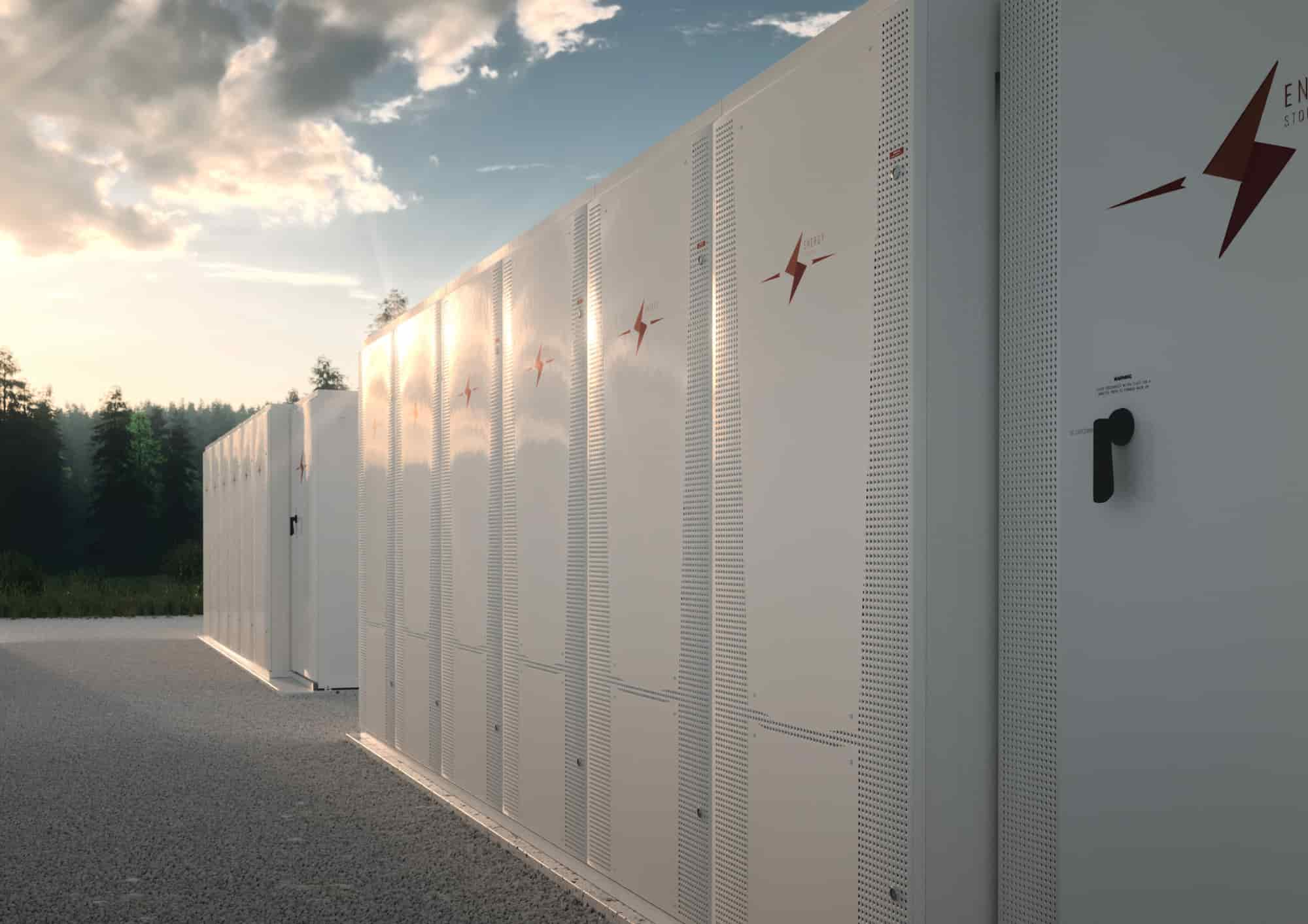
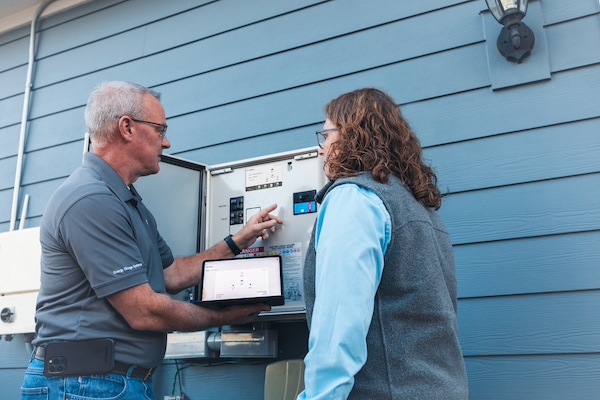

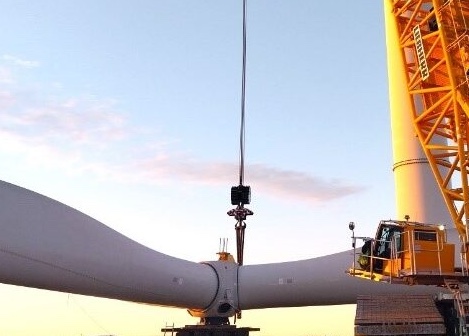

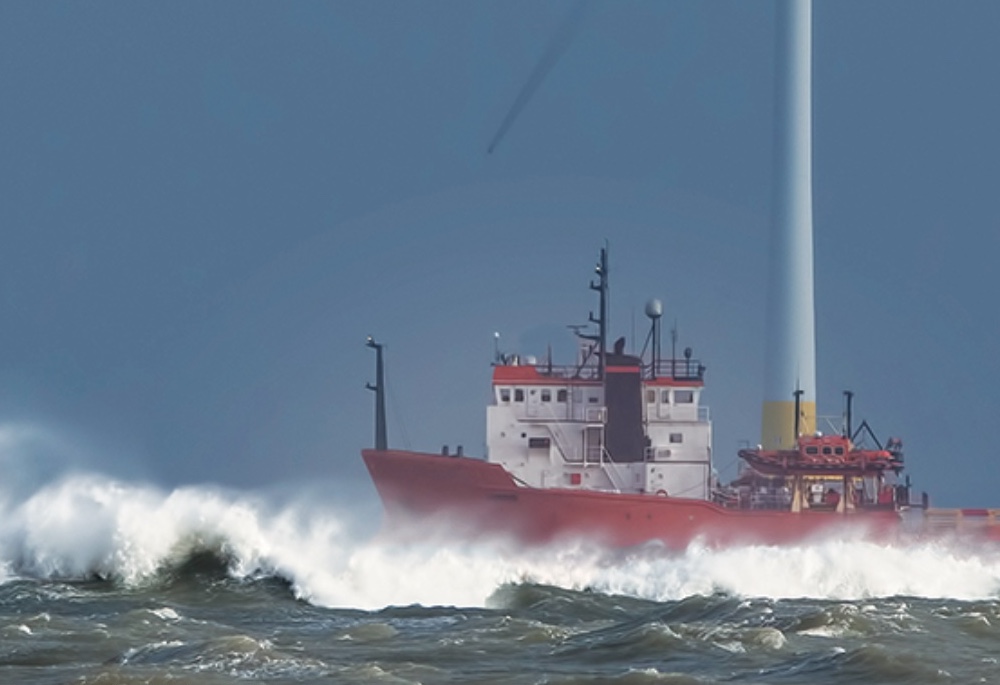

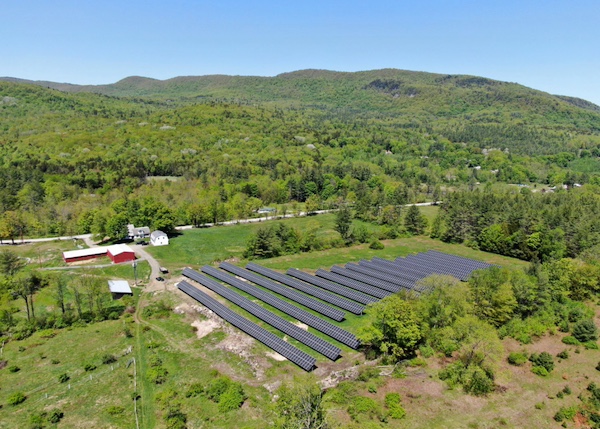
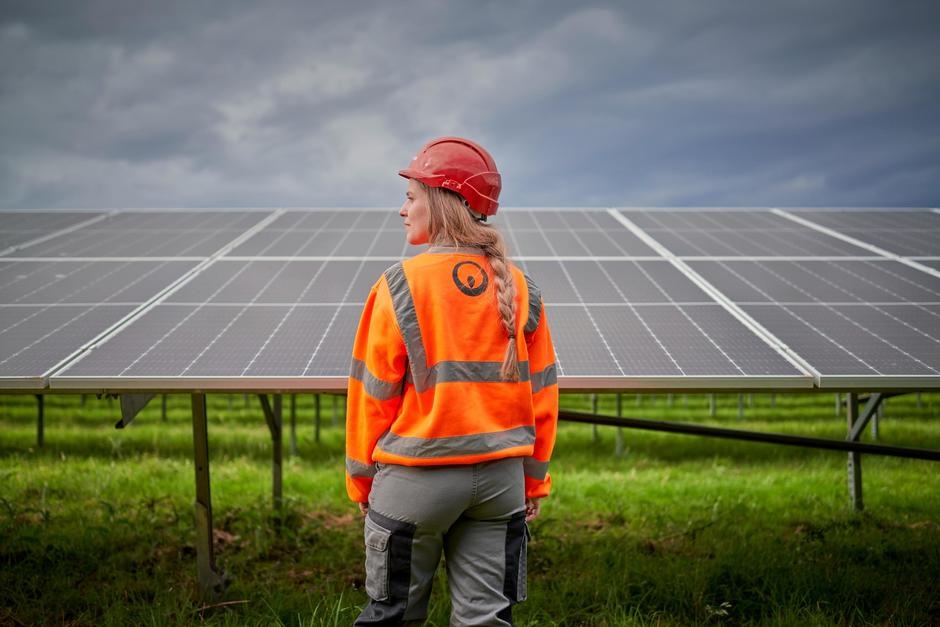





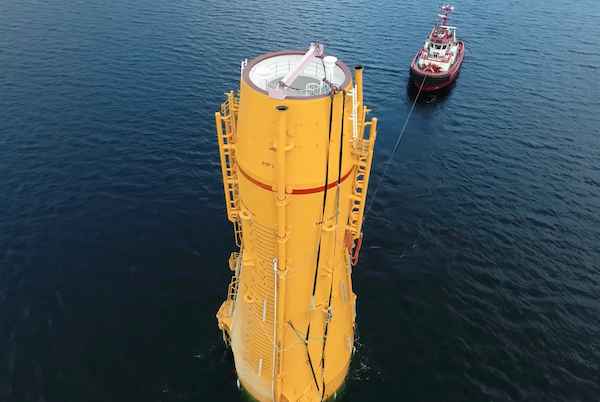

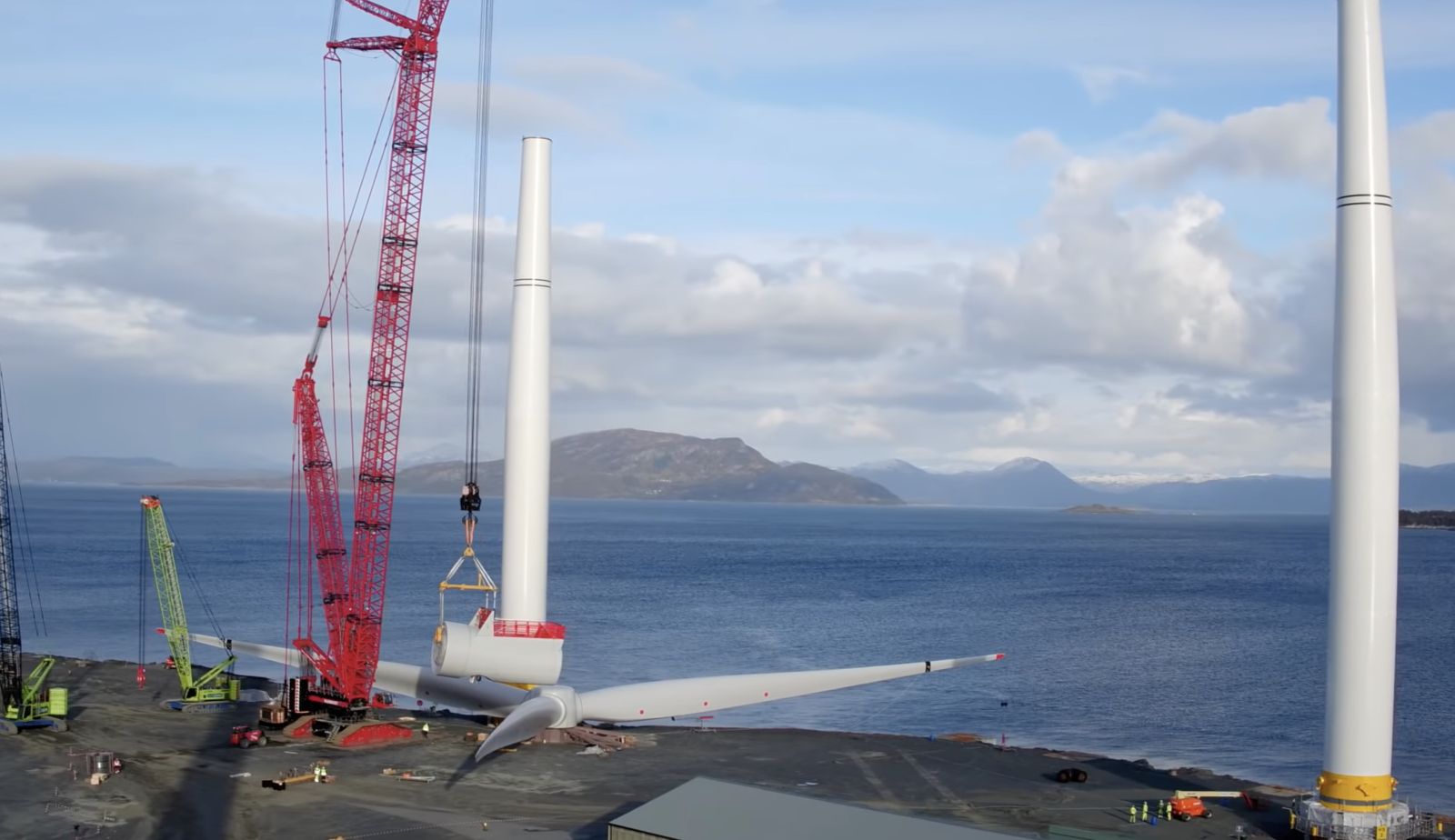


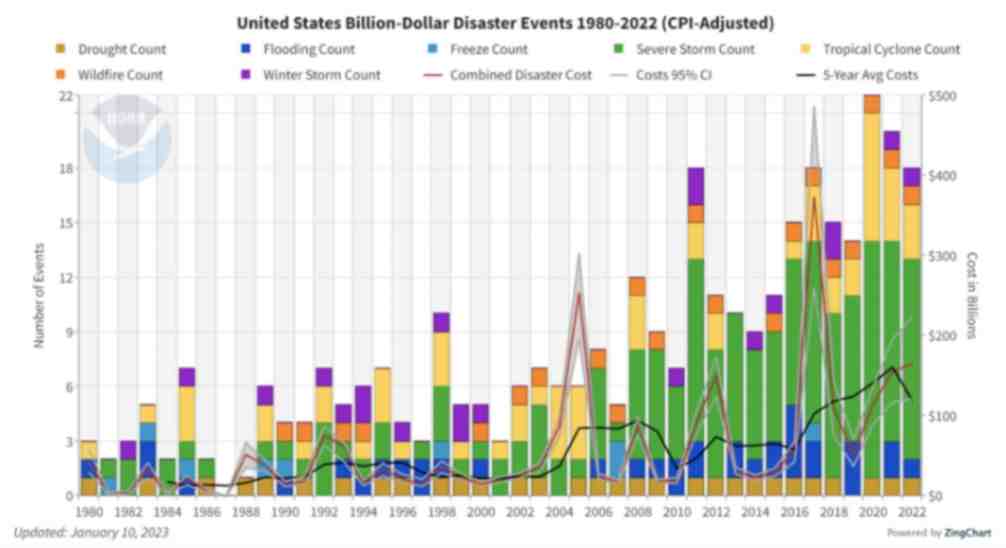

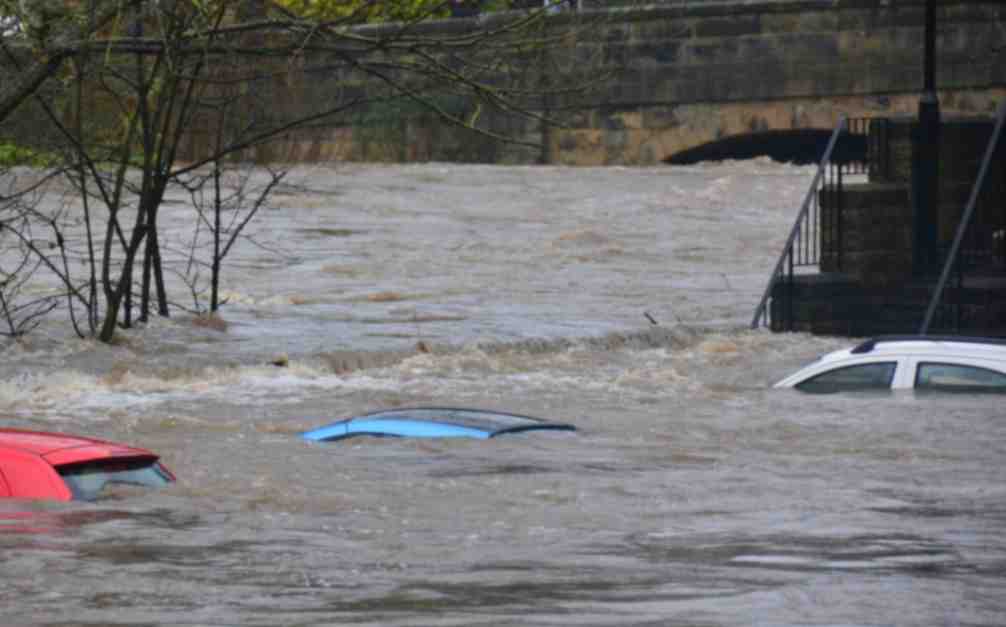
 Chris LeBoeuf is Global Head of the Extreme Loads and Structural Risk division of ABS Group, based in San Antonio, Texas. He leads a team of more than 60 engineers and scientists in the US, UK, and Singapore, specializing in management of risks to structures and equipment related to extreme loading events, including wind, flood, seismic and blast. Chris has more than 20 years of professional experience as an engineering consultant, and is a recognized expert in the study of blast effects and blast analysis, as well as design of buildings. He holds a Bachelor of Science in Civil Engineering from The University of Texas at San Antonio, and is a registered Professional Engineer in 12 states.
Chris LeBoeuf is Global Head of the Extreme Loads and Structural Risk division of ABS Group, based in San Antonio, Texas. He leads a team of more than 60 engineers and scientists in the US, UK, and Singapore, specializing in management of risks to structures and equipment related to extreme loading events, including wind, flood, seismic and blast. Chris has more than 20 years of professional experience as an engineering consultant, and is a recognized expert in the study of blast effects and blast analysis, as well as design of buildings. He holds a Bachelor of Science in Civil Engineering from The University of Texas at San Antonio, and is a registered Professional Engineer in 12 states.

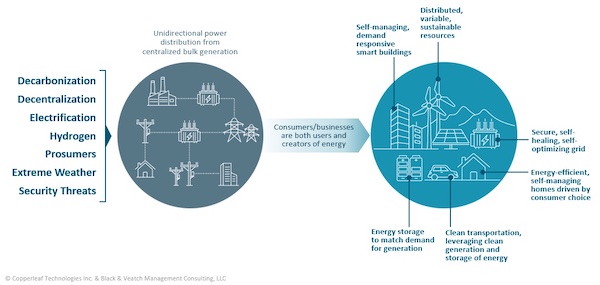
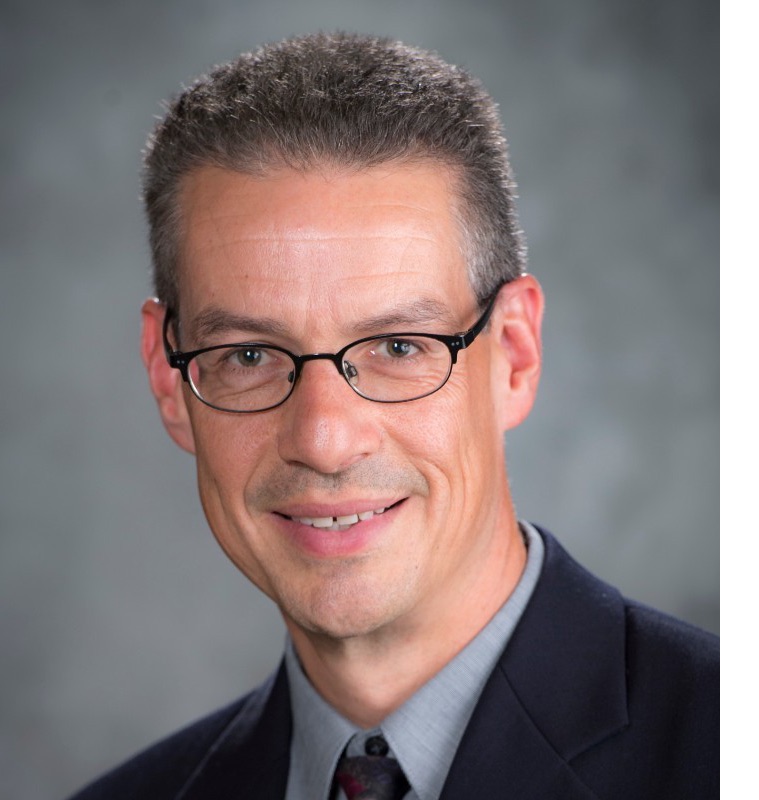 Russ is a Director of Product Management, Decision Analytics at Copperleaf. He is an innovative leader with over 20 years of comprehensive business and technical experience in high-tech product development organizations. Russ holds a B.A.Sc. in Mechanical Engineering from the University of British Columbia and a Management of Technology MBA from Simon Fraser University.
Russ is a Director of Product Management, Decision Analytics at Copperleaf. He is an innovative leader with over 20 years of comprehensive business and technical experience in high-tech product development organizations. Russ holds a B.A.Sc. in Mechanical Engineering from the University of British Columbia and a Management of Technology MBA from Simon Fraser University.